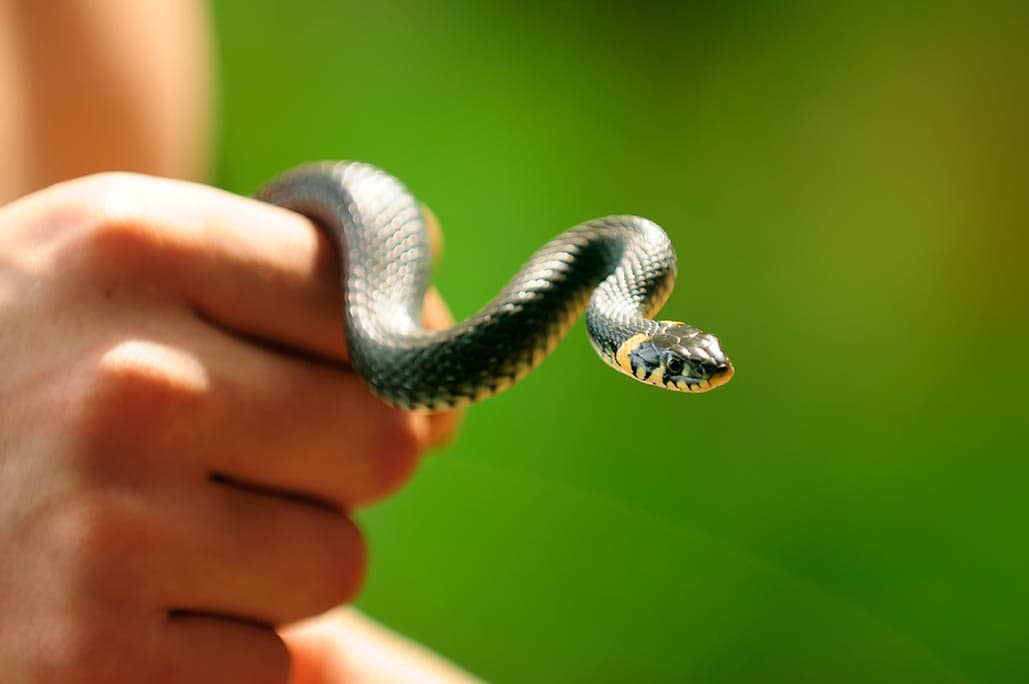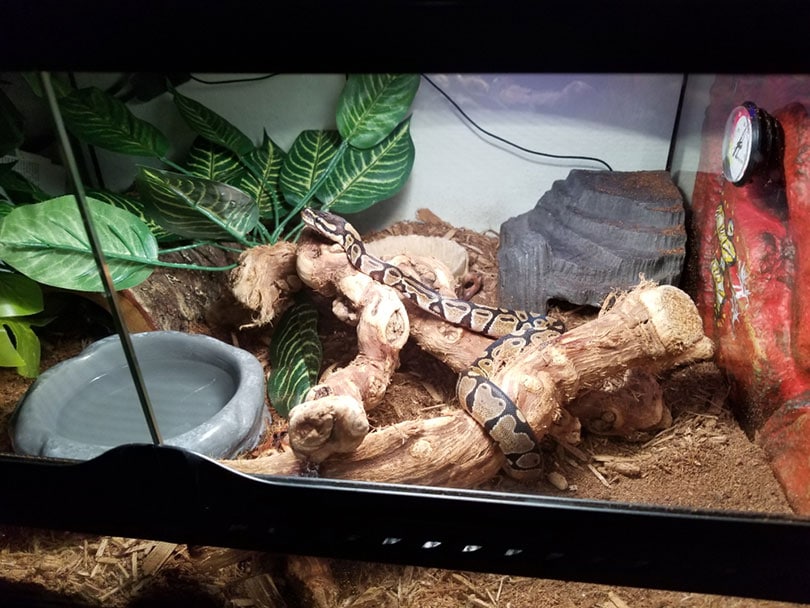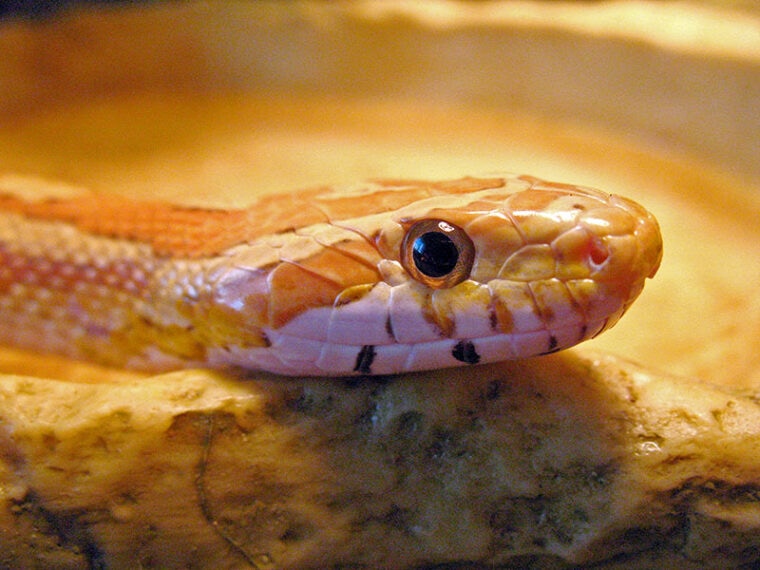
The shedding of skin is a natural process found throughout the animal kingdom and snakes will continue shedding their skin throughout their entire lives. Unlike many other species, snakes often shed their entire skin at once.
Just like any other species, corn snakes will go through this process and depending on their age, will often shed anywhere from 4 to 12 times per year. Neonates and juveniles will shed much more often since they are growing. Mature corn snakes will also continue to shed, but less frequently, after they’ve reached their adult size.
The entire shedding process can take 1 to 2 weeks, with the actual shedding of the skin lasting anywhere from about 30 to 60 minutes, give or take. Keep reading to learn more about the importance of proper shedding, signs of shedding issues, and what you can do to keep your corn snake as healthy as possible.
Why Your Corn Snake Sheds
We humans shed millions of skin cells every day, while snakes and some other animals will shed a layer of skin in one piece. The process of shedding for snakes is called ecdysis,1 and it is an essential part of life that occurs because as the body continues to grow, the skin does not.
A corn snake can shed throughout the year and the frequency is dependent on several factors including age, size, health, activity level, and environmental temperature and humidity. As mentioned, shedding often occurs between 4 and 12 times per year, with younger snakes shedding more frequently because of their growth rate.
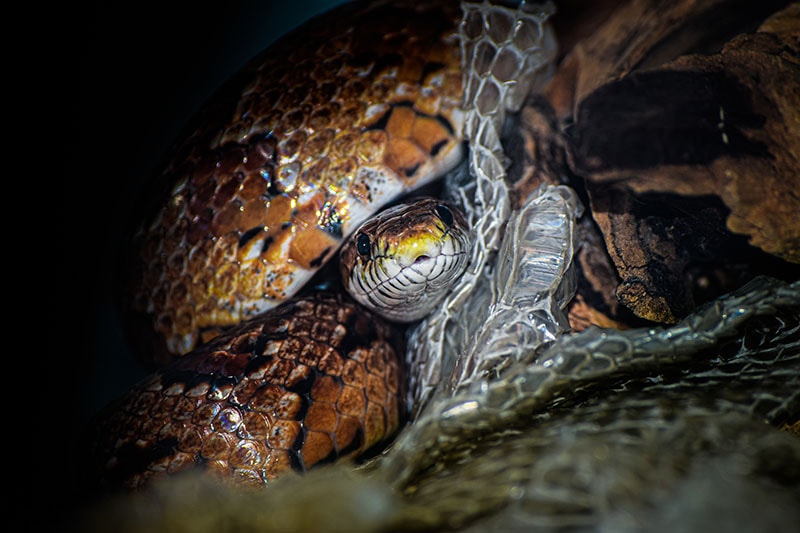
The Shedding Process
The process of shedding can take anywhere from 1 to 2 weeks. It’s easy to pick up on an impending shed due to the changes your corn snake will go through during this time. The first noticeable sign is when the eyes turn a cloudy, bluish-white color, followed by the skin looking duller.
You may also notice behavioral changes because the process can be quite stressful for the snake and increases its vulnerability. They may be more likely to hide away, or even be more defensive since they temporarily lose some of their vision.
The sloughing off of the skin typically only takes between 30 to 60 minutes or even less. In the wild, corn snakes have plenty of natural debris to rub against and help them in the process, but in captivity, you need to provide hides, rocks, or wood to help them along.
More often than not, you won’t observe the process but will look in on your pet and notice a fully shed skin within the enclosure.
Shedding Issues (Dysecdysis)
Dysecdysis,2 or stuck shed, refers to an incomplete shedding of the skin. Healthy snakes that are kept in a captive environment with proper temperature and humidity levels will shed their entire epidermis at once. This is unlike other reptiles like lizards, which shed their skin in pieces. If a snake is unable to shed the entire skin at once, something is off.
Signs a Corn Snake Is Having Trouble Shedding
Causes
Incomplete shedding is a sign of an underlying problem, and in a captive environment it is most often the result of poor husbandry. Incorrect temperature and humidity levels within the enclosure, improper nutrition, handling during the shed, parasitic infections, and bacterial infections can all cause shedding problems. Lack of furnishing to assist in the shed can also cause pieces of skin to be more difficult to remove.
Diagnosis
A healthy shed should have no leftover skin anywhere on the body. So diagnosing dysecdysis is fairly easy since the skin often sloughs off in pieces and some old skin may be left behind. The skin can remain on any part of the body but this is especially common around the eyes and at the tip of the tail.
Treatment
Trouble shedding can sometimes be resolved at home by soaking the snake in warm water or by wrapping them in a damp towel. Owners should never try to peel the skin off, as it can damage the new skin below and cause significant injury. Concerns about stuck sheds should be discussed with your snake’s veterinarian. Previous unsuccessful sheds should also be discussed with your veterinarian during your snake’s welfare checks.
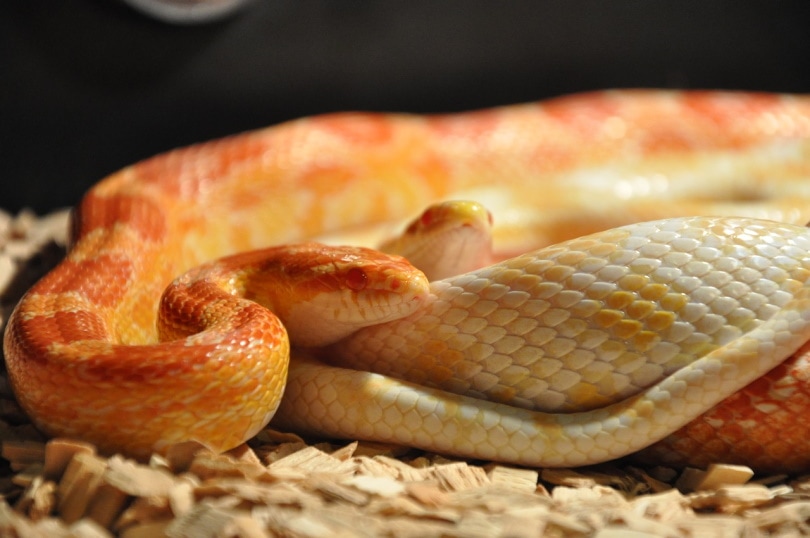
The Importance of Proper Care and Husbandry
Proper care and husbandry are important for any pet,3 but pet reptiles can be especially sensitive as they come from all over the world and originate from very specific and very different climates. A healthy captive life is imperative to prevent illness and ensure your snakes live a long life.
Any snake keeper should know about the specific species in their care and work to make sure their pets are being provided with proper care. Corn snakes are native to the eastern United States, and their population is most dense in the southeast, where there are hot, humid summers and mild winters.
Temperature and Humidity
A corn snake’s enclosure should include a warm side for basking and a cool side on the opposite end to allow them to move between these areas to maintain a comfortable temperature. Like any cold-blooded reptile, they rely on the temperature of their environment to regulate their body temperature.
The basking area should be kept between 85 and 95 degrees Fahrenheit (29.4- 35 °C), while the cool side should be kept between 77 and 82 degrees Fahrenheit (25 – 27.7°C). As far as humidity goes, most recommended humidity levels are between 30 and 50 percent, but considering their natural habitat, they thrive best with humidity levels between 50 and 65 percent. This will help them maintain their overall health and aid in proper shedding.
Lighting
Corn snakes do not require any special lighting for their enclosure but should be provided with natural or room lighting to go along with the normal day and night cycles, which change with the seasons. This will allow them to regulate their natural biorhythm, which is important for their health, and carry out natural behaviors.
Habitat Setup
There are a variety of substrates that can be used in a corn snake’s enclosure. This includes coconut fiber, aspen, and cypress bedding. Aromatic woods like pine or cedar should be avoided, as the natural oils from these trees can be toxic to snakes. Newspaper and reptile carpet are also options, but your corn snake will like to burrow, and the above substrate options will allow them to do so. Sand should also be avoided, as it can cause impaction in the digestive system.
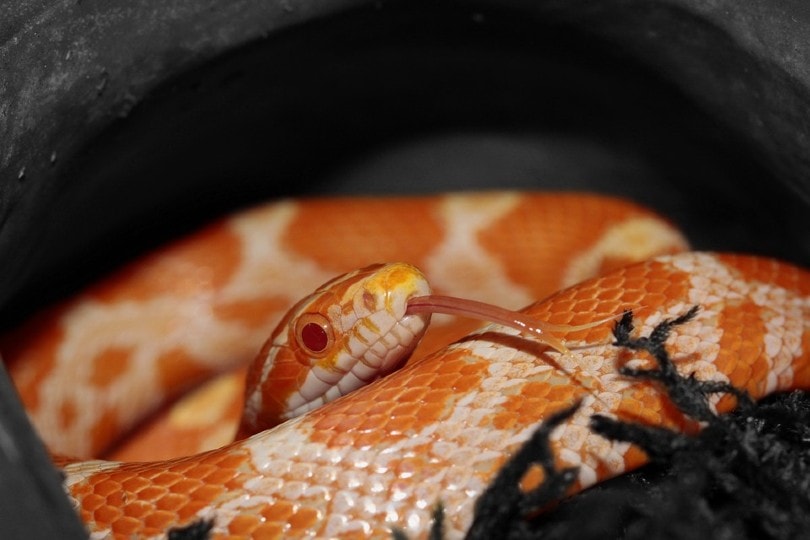
Healthy Diet
In the wild, an adult corn snake feeds primarily on rodents and other small mammals, but will also eat small lizards, frogs, birds, and eggs. Captive corn snakes do just fine on a diet of humanely killed, frozen-thawed mice.
As a general rule, your corn snake should be fed every 7 to 14 days, with feeding closer together when they are young. The size of their prey should be based on their overall size. Any questions about feeding your corn snake should be directed to your veterinarian.
Conclusion
Corn snakes will shed approximately 4 to 12 times per year depending on several factors. Young snakes shed more frequently than adults due to their more rapid growth rates, but all corn snakes will continue to shed throughout their entire lives. The entire process takes 1 to 2 weeks, with the sloughing off of the skin taking around 30 to 60 minutes. It’s important to provide captive corn snakes with an optimal diet and living environment to encourage healthy shedding and overall health and wellness.
Featured Image Credit: thomaslabriekl, Shutterstock



